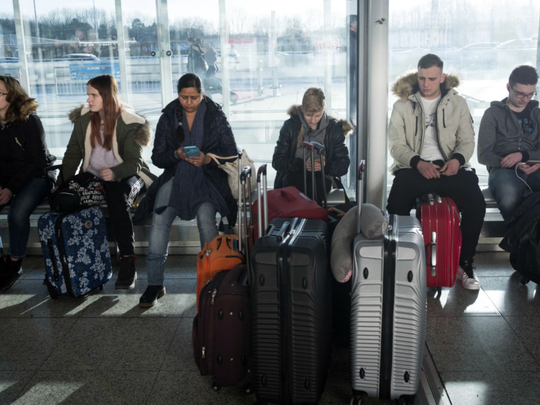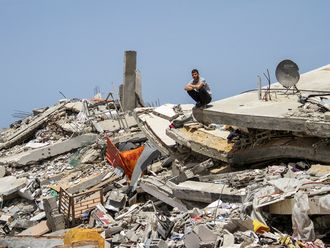
A lot can happen in a year, but 2017 was particularly eventful when it came to how we travelled the world. The threats that loomed largest in 2016, Zika and the migrant crisis, faded into the rear-view mirror as talk of a United States travel ban and Brexit suddenly dominated global headlines. And that was just the beginning. Here are six significant ways the world changed for globetrotters in the last 12 months.
Starting with the Americas: Three hurricanes of extraordinary strength crashed into Texas, Florida, the Caribbean, and Puerto Rico; the effects of Harvey, Irma, and Maria continue in nearly every place that they were felt. Parts of the Caribbean have been written off the tourist map until at least late 2018, including St Barth (the island’s villas are back online, but hotels will need the year to rebuild) and the US. Virgin Islands; the British Virgin Islands and Puerto Rico are showing slightly quicker signs of recovery. Almost simultaneously with the storms, wildfires swept the West Coast in two bursts, one across California’s wine country and another in the greater Los Angeles area. The natural disasters have set travellers on hunts for new places to cure their winter doldrums: Trending warm-weather alternatives include New Zealand, Bermuda, and Mexico’s Los Cabos. But remember that trips to recovering areas provide much-needed tourism dollars that are crucial to restoration efforts.
Travellers in the back of the plane were subject to several new kinds of torture in 2017. Passengers got physically assaulted or dragged off planes in a series of nightmarish incidents that catapulted “airline spokesperson” to one of the most unenviable jobs of the year. It wasn’t just the inhumane in-flight brawls that raised eyebrows: In July, United Airines announced plans to resell flyers’ seats to other people for more money. In September, Jet Blue Airways decided to shrink its seats after years of prioritising a customer-first philosophy. And last month, British Airways announced a new policy whereby those who pay the least for their tickets also get to board last. All this, while Emirates Airline took luxury aviation standards to new heights with its upgraded premium cabin configurations that look less like leather seats and more like someone’s living room.
If you think of oceangoing ships as a gathering place for the retired set, you’ve been living under a rock (far from the beach). This year, cruise companies made a concerted effort to attract younger travellers, with expedition-class ships sailing to uncharted Arctic territories and facilitating high-octane thrills around the world. For some companies, that meant offering bike tours of classic European destinations; for others, it meant open-water kayaking off the coast of Alaska. It’s not just about adventure, either: Cruise ships became more innovative in their dining and entertainment concepts, swapping tired revue shows for original, sometimes interactive productions. The trend will continue in 2018, with a push for cutting-edge technological advancements coming to most major lines.
With the volume of breaking news reaching what felt like an all-time high, travellers looked to get far, far away from it all in 2017. The destinations on travel agents’ lips earned stood out for their seclusion-Antarctica, the Maldives-and unplugged experiences in the great outdoors (Nepal, South Africa). Mental well-being and holistic wellness took precedence over massages or facials, with companies from Four Seasons Hotels to Seabourn Cruise Line launching programmes on mindfulness and meditation. In fact, the social media analysts at Local Measure, a consumer insights firm, say that travellers referenced “detoxing” more than twice as often in 2017 as in 2016.
Nationalist fervour in places as disparate as the US, Britain and Germany made closed borders one of the year’s most commonly recurring themes — alarming to travellers who live by the credo of a borderless world. It manifested itself most prominently in US President Donald Trump’s infamous travel ban, now officially in effect, barring visitors from eight countries (including six with mostly-Muslim populations). You didn’t need to be from those places to feel the cascading effects of “enhanced security and screening”. In airports around the world, additional safety measures included banning laptops on flights and pat-downs at the gate. Recently, airlines started cracking down on smart luggage with battery packs. With Europe voting to end visa-free travel in March and Trump responding with new rules for inbound tourists earlier this month, the narrative is still unfolding.
A word that should have been added to the dictionary this year: “Overtourism.” In destinations from Venice to Peru, local governments confronted the fact that while tourism is an important economic engine, too much of it becomes destructive. In Ibiza, the unthinkable happened: The municipality of San Jose banned DJs from 16 beach clubs and started regulating the number of hotels and Airbnb listings available at any given time, moving away from the island’s up-all-night reputation. In Dubrovnik, Croatia, legislation capped visitors to the medieval walled city at 4,000 per day. And in Peru, long-rumoured limits on daily entries to Machu Picchu finally took off in a play to protect the historic site from the effects of excessive foot traffic. All this is good news, and not just for destinations at risk of being ruined. It means that in these fragile places, tourism will develop with a closer eye on sustainability-and some overlooked places will get the turn in the spotlight they’ve always deserved.
— Washington Post
Eric Laignel is a renowned photojournalist and author on Architectural Digest.








